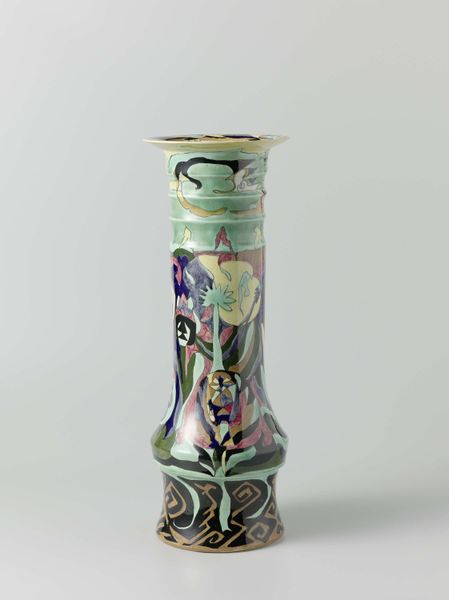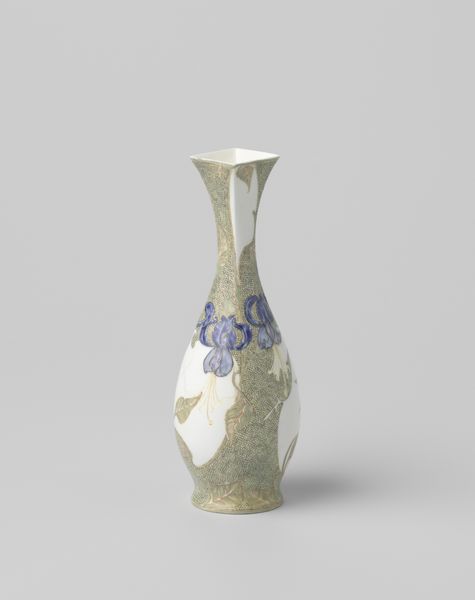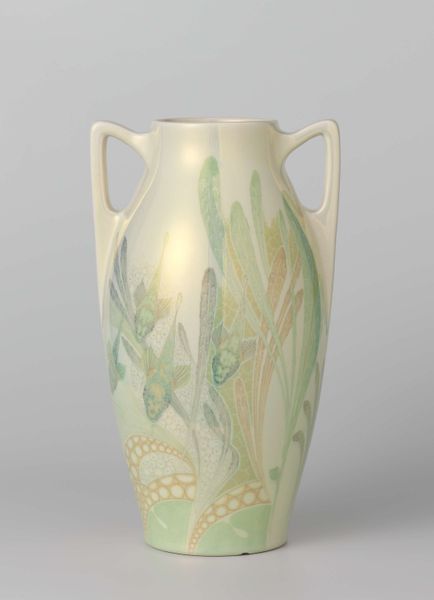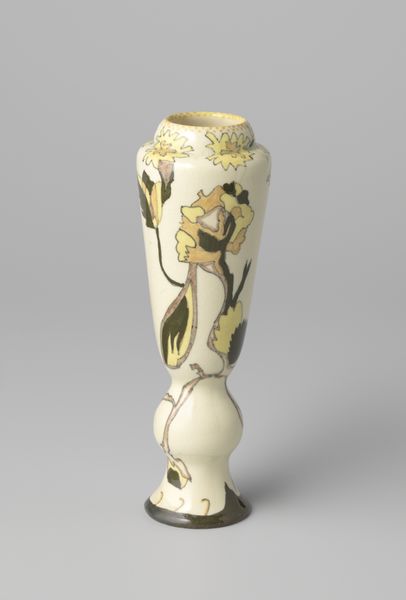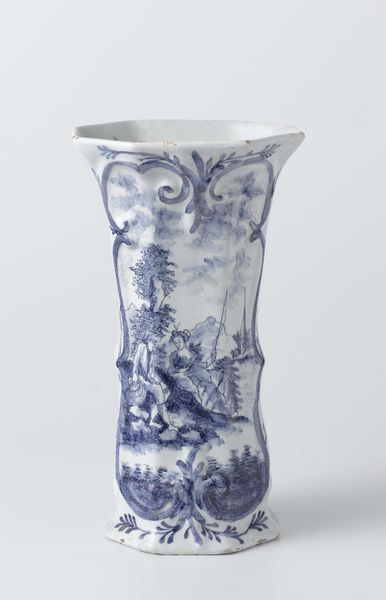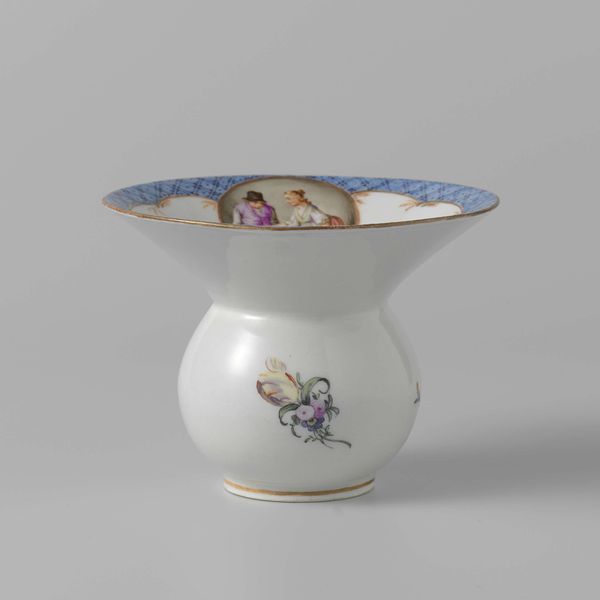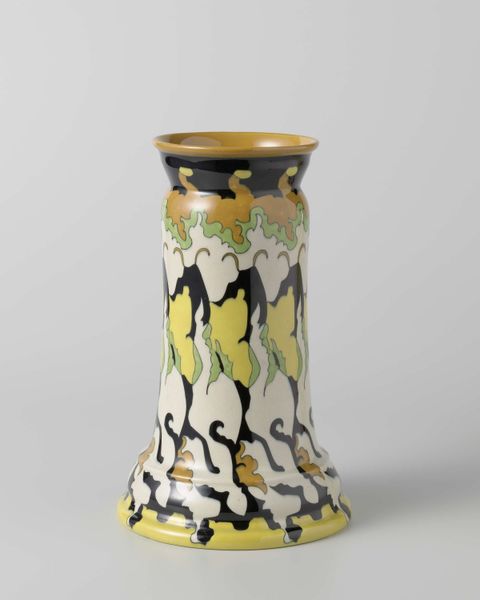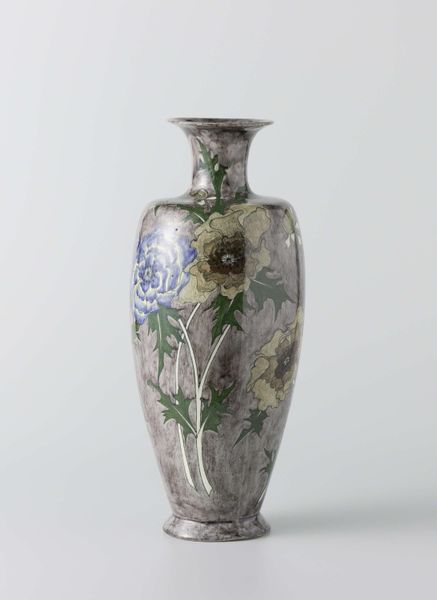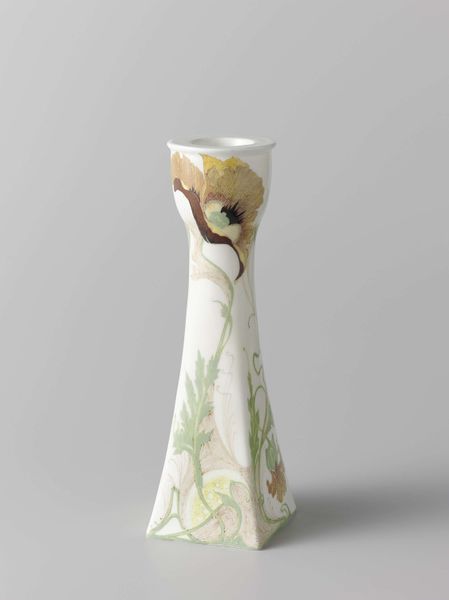
Vaas van beenderporselein, veelkleurig beschilderd met hagedissen en planten 1901
0:00
0:00
ceramic
#
art-nouveau
#
ceramic
#
ceramic
#
decorative-art
Dimensions: height 15.4 cm, diameter 10.0 cm
Copyright: Rijks Museum: Open Domain
Curator: Well, that’s just charming. It feels like a secret garden condensed into a vase. Editor: This is a bone china vase from the N.V. Haagsche Plateelfabriek Rozenburg, dating to 1901. The full title is, “Vase of bone china, multi-colored painted with lizards and plants.” What draws you to it particularly? Curator: Lizards! Climbing all over it! I love that naturalism mingling with the high art of porcelain. The flowers are beautiful too, but those lizards add a bit of delicious subversion, like they’re whispering, “Nature always wins.” Editor: Rozenburg was quite renowned at the turn of the century for their distinctive Art Nouveau style. Their pieces often found their way into important exhibitions and collections, really shaping the aesthetic tastes of the era. They presented an image of modernity intertwined with an appreciation of organic form. Curator: I bet this piece turned heads when it first appeared. The colors are subdued but luminous and the shapes... that gentle curve inward near the base, it gives a feeling of restrained energy. Do you think these pieces were mostly display items or were they used to hold flowers? Editor: That's a pertinent question. While certainly decorative, vases like this also speak to the broader Arts and Crafts movement. There's an implicit argument for beauty in the everyday, suggesting even functional objects should possess artistic merit. Owning this kind of piece demonstrated a certain social and cultural awareness. Curator: Knowing it was made to be *used*, even occasionally, somehow amplifies its appeal for me. Like having a little piece of rebellious nature sitting casually on your mantelpiece, reminding everyone that beauty doesn't have to be stuffy. Editor: I see what you mean. In a way, Rozenburg managed to domesticate the wild through these refined objects. Curator: Absolutely, and it's that push and pull, that tension, which I find so irresistible. I guess, at the end of the day, it’s the unexpected detail that always captures my heart. Editor: I appreciate how it reflects complex cultural values from a very particular historical context. It’s both aesthetically beautiful and deeply representative.
Comments
No comments
Be the first to comment and join the conversation on the ultimate creative platform.
